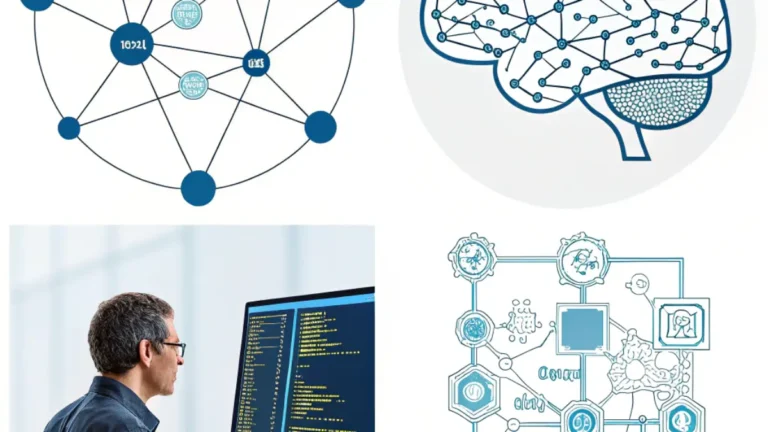
Introduction to the Forestry Development Authority
The Forestry Development Authority (FDA) is a governmental agency tasked with overseeing the protection, conservation, management, and sustainable utilization of forest resources. While most prominently associated with Liberia, many nations with significant forest coverage have similar institutions playing parallel roles.Established to regulate one of the most valuable environmental and economic assets — forests — the FDA ensures that forestry practices support long-term environmental health and contribute to national development.
Origins and Mandate of Forestry Development Authorities
The idea of a Forestry Development Authority was initially born out of the pressing need to bring structure and legal governance to the often chaotic and exploitative forestry sectors. The core mandate of these authorities typically includes formulating national forestry policies, issuing concessions for logging, monitoring environmental impact, and fostering international collaborations for forest conservation. In many nations, the FDA also supports reforestation, afforestation, and community forest development programs. These bodies are often autonomous or semi-autonomous entities that report directly to the environment or agriculture ministries. The increasing global focus on carbon emissions and biodiversity has amplified the relevance of forestry development agencies in both developing and developed countries.
Strategic Role in Environmental Protection
Beyond the regulation of timber production, the Forestry Development Authority plays a pivotal role in protecting endangered species, maintaining water cycles, and mitigating climate change. Forest ecosystems store vast amounts of carbon, filter water, and host diverse flora and fauna. The FDA is therefore not merely a management body but a strategic environmental institution. It aligns its activities with global commitments like the UNFCCC, REDD+ (Reducing Emissions from Deforestation and Forest Degradation), and the Convention on Biological Diversity. By integrating climate strategies with forest management, the FDA helps countries meet international environmental goals. Moreover, the Authority often conducts environmental impact assessments (EIAs) and ensures compliance with national environmental protection laws, acting as a gatekeeper against illegal exploitation.
Forest Concessions and Licensing Framework
One of the most sensitive and powerful functions of the Forestry Development Authority is the granting of forest concessions and licenses. However, the process must be transparent and guided by environmental and social safeguards. To address corruption risks, many FDAs have adopted digital concession tracking systems and public disclosure requirements. Countries like Liberia use LiberTrace, a timber traceability system that allows authorities to monitor timber from harvest to export. This prevents illegal logging and ensures tax compliance.
Empowering Indigenous and Local Communities
Sustainable forestry cannot be achieved without empowering local and indigenous communities who depend on forests for their livelihoods. The FDA, in many cases, works alongside community forest groups to ensure participatory governance. Through Community Forest Management Agreements (CFMAs), locals are granted legal rights to manage and benefit from nearby forests. These agreements improve forest conservation while uplifting socio-economic conditions through jobs and local enterprises. This bottom-up approach reduces conflicts, prevents illegal land grabbing, and builds long-term ownership among forest users.
Key Partnerships and International Collaboration
The FDA often collaborates with global organizations like the World Bank, FAO, USAID, EU, and private carbon credit markets. These partnerships bring in technical expertise, funding, and innovation. For instance, the Voluntary Partnership Agreement (VPA) between Liberia and the EU under the Forest Law Enforcement Governance and Trade (FLEGT) initiative aims to ensure that only legally harvested timber is exported to Europe. Other programs like REDD+ provide financial incentives for reducing deforestation and enhancing carbon stock. Such collaborations not only strengthen the capacity of the FDA but also integrate it into global conservation efforts. By aligning national goals with international environmental commitments, the Authority gains both legitimacy and operational efficiency.
Monitoring, Enforcement, and Anti-Corruption Measures
Illegal logging and corruption remain two major challenges in the forestry sector. To counter these threats, the FDA has invested in real-time monitoring technologies, drone surveillance, and satellite imagery to track forest cover changes. Specialized units are formed for forest law enforcement, often in collaboration with the national police or military. Public hotlines and whistleblower protections are also implemented to encourage citizens to report illegal activities. A number of forestry authorities have adopted blockchain-based logging records to enhance transparency and reduce human interference in data management. By combining technology with strong institutional frameworks, the FDA creates a deterrent against forest-related crimes.
Contribution to National Economies
Forests contribute billions of dollars to national economies through timber exports, ecotourism, non-timber forest products (NTFPs), and carbon trading. The FDA regulates and facilitates these revenue streams, ensuring that forest wealth contributes to national development. For example, in Liberia, forestry revenue forms a significant part of the national GDP. The Authority also ensures that a portion of the revenue is reinvested into conservation and local development projects. Transparent reporting and public financial audits are key to building trust and legitimacy in how forestry income is utilized. Moreover, by promoting value-added timber processing locally, the FDA also supports job creation and industrial growth.
Research and Knowledge Generation
Modern forestry management demands constant research on tree species, soil quality, climate adaptation, and sustainable harvesting methods. FDAs often partner with academic institutions and research agencies to generate data that informs decision-making. Field research, biodiversity inventories, carbon stock assessments, and hydrological studies are some common research areas. The findings are used to update management plans, inform the public, and improve forest zoning strategies. Knowledge dissemination through workshops, reports, and open data platforms increases public awareness and stakeholder engagement. Data-driven governance helps ensure that forest exploitation remains within ecological thresholds.
Role in Climate Change Mitigation
Forests are critical carbon sinks, and the FDA has a crucial role in climate change mitigation strategies. By preventing deforestation and promoting reforestation, the Authority helps reduce atmospheric carbon dioxide levels. Projects under REDD+ and similar initiatives enable countries to earn carbon credits that can be sold on international markets. The FDA also implements climate-resilient tree planting programs and encourages agroforestry practices that integrate farming with conservation. The role of the Authority is particularly important in countries vulnerable to climate-induced disasters like floods and droughts. Forest cover helps stabilize the climate, regulate temperature, and protect biodiversity—all central to climate resilience.
Challenges Faced by the FDA
Despite its strategic role, the Forestry Development Authority faces numerous challenges. These include underfunding, limited personnel, political interference, and a lack of public awareness. Illegal logging syndicates often operate with impunity due to weak enforcement. Moreover, overlapping mandates with other government bodies sometimes cause jurisdictional conflicts. Climate change adds further complexity by altering forest dynamics, increasing wildfires, and introducing new pests and diseases. These issues require a multifaceted approach combining policy reform, stakeholder coordination, and capacity building. The success of the FDA depends largely on continuous institutional strengthening and political will.
Forest Certification and Compliance Standards
To ensure sustainability, the FDA promotes forest certification systems like the Forest Stewardship Council (FSC) and PEFC. These systems evaluate forestry operations against environmental, social, and economic criteria. Certified forests are allowed to export timber to premium international markets, increasing revenue while promoting responsible practices. Compliance with these standards also enhances the Authority’s credibility among international donors and partners. Annual audits, third-party inspections, and compliance monitoring are conducted to retain certification. The push for certification reflects the Authority’s commitment to high operational standards and ecological integrity.
Use of Technology in Forest Management
Technology has revolutionized how the FDA monitors and manages forests. From GIS mapping and remote sensing to mobile reporting apps, digital tools have made forest data more accurate and accessible. Drones are used to detect illegal logging or encroachment, while AI models predict fire risks and tree health. Blockchain technology ensures transparency in timber supply chains, making illegal logging traceable. These tools not only increase operational efficiency but also enhance public accountability. With the rise of digital governance, the Authority is becoming more agile, transparent, and responsive.
Gender and Social Inclusion in Forestry
Forestry has traditionally been a male-dominated sector, but the FDA is now pushing for gender and social inclusion. Women are being trained as forest rangers, researchers, and community leaders. Inclusive forest management ensures that all voices are heard in planning and decision-making. Programs that promote gender equity help in reducing poverty and improving conservation outcomes. The FDA collaborates with women’s cooperatives and youth groups to foster diverse participation. A more inclusive forestry sector leads to better community relations and stronger conservation ethics.
Future Outlook for the Forestry Development Authority
As environmental pressures mount, the role of the Forestry Development Authority will become even more vital. With proper investment, policy backing, and community participation, the FDA can lead a green transformation. Expanding its role in eco-tourism, climate finance, and digital governance will enhance its capacity to protect forests effectively. Public-private partnerships, youth engagement, and indigenous collaboration must be deepened. The next decade will test the resilience of FDAs, but also provide unprecedented opportunities to transform forestry into a tool for both ecological and economic sustainability.
5 Key Takeaways on Forestry Development Authority
- Forest Development Authorities regulate, conserve, and sustainably utilize national forest resources.
- They issue licenses, monitor compliance, and prevent illegal activities like logging and encroachment.
- Community engagement, especially via CFMAs, ensures long-term forest sustainability.
- International cooperation with REDD+, EU-FLEGT, and others strengthens technical and financial capacity.
- The future of FDAs hinges on climate-smart, tech-enabled, and inclusive forest governance.
Sample Table: Key FDA Functions and Partners
| Function | Description | Partners |
| Forest Concession Licensing | Issuing legal rights for timber harvesting | Local & international firms |
| Environmental Compliance | Ensuring operations meet ecological standards | EPA, Civil Society |
| Community Forest Management | Empowering locals to manage forest lands | NGOs, Rural Cooperatives |
| International Collaboration | Engaging with climate and trade frameworks | EU, UN, World Bank |
| Digital Forest Monitoring | Using satellite and AI tools for real-time surveillance | Tech companies, Donors |
Conclusion: Why Forestry Development Authority Matters
The Forestry Development Authority is far more than a government agency—it serves as a vital steward of our planet’s natural wealth, biodiversity, and climate stability. As environmental degradation accelerates worldwide, organizations like the FDA are essential to building a sustainable and resilient future. By leveraging smart policies, innovative technology, community participation, and global collaboration, the FDA can strike a crucial balance between economic growth and ecological preservation. From safeguarding wildlife habitats and expanding carbon sinks to generating sustainable livelihoods, its work influences both human prosperity and environmental health. To protect forests for generations to come, strengthening and modernizing such institutions is not just beneficial—it is absolutely imperative.
Frequently Asked Questions (FAQs)
What is the function of Forestry Development Authority in Liberia?
To manage, conserve, and ensure the sustainable use of Liberia’s forests through regulation, monitoring, and community involvement.
What is the definition of forest development?
It’s the planned growth, use, and protection of forests for environmental and economic benefits.
What is the meaning of FDA in Liberia?
FDA stands for Forestry Development Authority, Liberia’s national forest management agency.
What is the Forestry Development Master Plan Ghana?
A national strategy to guide sustainable forest use, conservation, and community participation in Ghana.
What are the regulator functions of the forest?
Forests regulate climate, water cycles, soil quality, and biodiversity.
What is the role of the FDA in Liberia?
To enforce forest laws, prevent illegal logging, protect wildlife, and support sustainable forestry.





